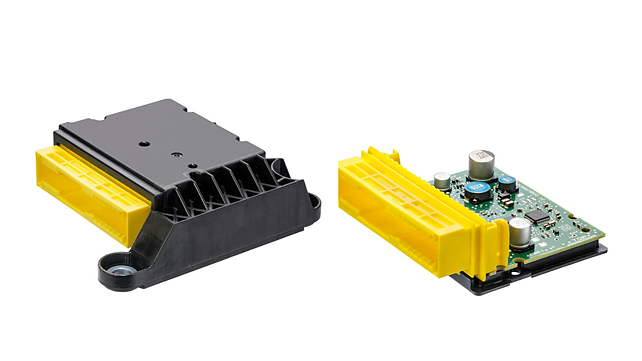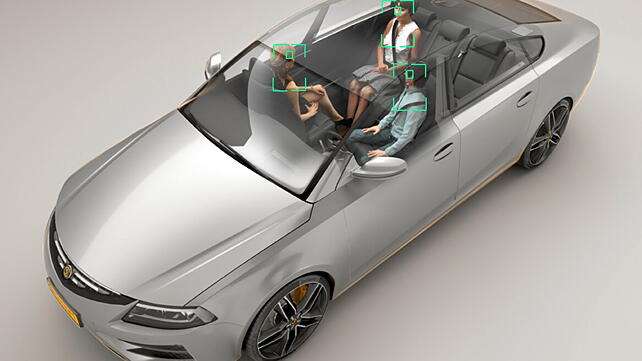
As per a report published by the World Health Organization (WHO) in February 2020, approximately 1.35 million people lose their lives across the globe each year to road traffic crashes. Between 20 and 50 million more people suffer non-fatal injuries, with many incurring a disability as a result of their injury.
More than half of all road traffic deaths are among vulnerable road users: pedestrians, cyclists, and motorcyclists. Improving the safety features of vehicles is a key priority for the automotive industry, which is working towards a future with zero fatalities, zero injuries, zero crashes, collectively called Vision Zero.
The Indian market is rapidly transforming, the changes are significant and across domains. Environment imperatives and safety requirements are the two critical issues facing the auto industry in the country. Many of the critical safety features like ABS or airbags have become standard in the cars sold in India. More consumers today consider parameters like GNCAP ratings and features beyond what is mandated, while purchasing a vehicle.
This requires automakers to implement features that might not be mandated but are critical for safety. In this scenario, passive safety features are becoming crucial across all categories of vehicles.
What is passive safety?
In simple terms, automobile safety systems are classified into two segments – active safety systems and passive safety systems. Active safety systems work to prevent crashes and accidents from happening. The main job is to warn or early prevent the vehicle from hazardous situations. Brakes, ABS, ESC, etc. are good examples of active safety systems.

Passive safety systems are technologies acting as an extra safety layer to minimise and contain the consequences in the event of a crash/ accident to drivers, passengers, and even vulnerable road users. The purpose of such systems is to provide the best protection to road users in/ after a crash.
Airbags or seatbelts, for instance, are prominent examples of these technologies. While advanced pre-crash systems detect critical situations by surrounding sensors even before a crash occurs, pre-condition occupant safety systems are another good example. The major shift in legislation in India for airbags was introduced earlier in 2021, mandating dual front-seat airbags for cars. As this becomes the norm, many OEMs have already begun offering six airbags in their products.
There have been several developments in the passive safety technologies sector in the past few years. These are crucial, particularly given the rising interest in assisted and autonomous driving technologies.
Smart passive safety technologies
As we move towards connected, electric, and autonomous mobility, passive safety systems also need to transform. This is done by enhancing today’s passive safety system by integrating vehicle and surrounding information to provide real situation-related protection to vehicle occupants and vulnerable road users.
Integrated safety functions cover Hazard (e.g. V2X warning), Pre-Crash (e.g. loading airbags), In-Crash (e.g. airbag deployment), Post-Crash (e.g. eCall, EDR) driving phases. This kind of holistic safety system is supported by the Safety Domain Control Unit (SDCU), which has been introduced for performing high-end applications.
The control unit integrates information from forward-looking environmental sensors, making it possible to estimate the severity of an accident before it occurs and conditioning the restraint systems accordingly. Therefore, the system can react more quickly and precisely, thus better protecting the vehicle occupants and vulnerable road users.
The product lines are categorised based on the complexity of the safety system requirements. The Airbag Control Unit (ACU) provides elementary restraint control features. ACUs support instant communication with the satellite crash sensors, which help to detect and evaluate the intensity of the crash situation. Actions are triggered based on the assessment and severity of the situation and focus on occupant safety functions.
However, one also has to keep in mind the seating positions of the occupant in the vehicle before deploying airbags. The Safety Control Unit provides an integration platform for passive and active safety functions, which for example, can include an active emergency belt control function bringing the occupants into an optimal seating position in dangerous situations even before the crash occurs.

Future restraint systems for automated driving will derive safety decisions based on innovative functionalities like Occupant Safety Monitor (OcSM) using interior integrated sensors to monitor the occupants and compartment environment as well as Pre-crash Safety Monitor (PcSM), which observes the pre-crash environment outside the car, identifies critical objects or situations to trigger airbag deployment before the crash occurs.
However, when a crash does occur, Post Crash Braking, another function integrated into the Safety Control Unit, is helpful. Post-crash braking helps in a situation, where the driver fails to react after the crash. In these situations, the vehicle’s brakes are automatically applied to prevent follow-up accidents that could endanger the vehicle occupants or other road users.
Passive safety beyond passenger safety
However, we need to also look at unavoidable instances when accidents occur, where vulnerable road users like pedestrians are involved. In such cases, technologies like the pressure-based Pedestrian Protection System can be life-saving for pedestrians. Within 10-15 milliseconds of an impact, the active hood of the vehicle is triggered and raised by special actuators. This reduces the risk of death or severe injury to the pedestrian from hitting the hood and underlying engine block.

The pedestrian protection sensor consists of a flexible air tube laid across the entire width of the car in its front bumper. The tube is situated directly behind the foam block fitted at the front of the vehicle to absorb impact energy.
Conclusion
Passive safety is an integral part of holistic safety system solutions not only for today but also for futuristic vehicle architecture requirements. From seat belts, airbags to sophisticated high-end systems, the industry offers a vast range of technologies and continuously improves and adds to these technologies.
However, adopting these lifesaving technologies in a value-driven market like India will be highly driven by policy and consumer awareness. As the population becomes more conscious of the importance of automotive safety, the market will witness more advanced safety technologies rolling out in India.
About the Author: Sukhdeep Sandhu is Market Head – India, Passive Safety and Sensorics business unit, Continental Automotive India.